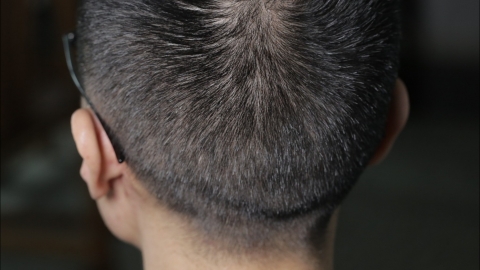What causes pain on both sides of the neck at the back of the head?
Generally, pain on both sides of the neck and back of the head may be caused by factors such as cold exposure, poor posture, tension headaches, cervical spondylosis, or hypertension. Symptomatic management through general treatments or medication may be necessary. If discomfort persists, it is recommended to seek medical advice promptly and undergo appropriate treatment under a doctor's guidance. Detailed explanations are as follows:

1. Cold Exposure
When the back of the head and both sides of the neck are exposed to cold air for prolonged periods, such as from air conditioning, fans, or cold environments without adequate warmth, local blood circulation may become impaired, leading to muscle tension and spasms, which can cause pain. Symptoms may include neck stiffness and limited mobility. It is recommended to improve blood circulation and relieve pain through methods such as warm compresses and massage.
2. Poor Posture
Long-term desk work or maintaining a downward head position while using mobile phones or computers can cause the neck muscles to remain tense for extended periods, resulting in muscle strain and pain. Symptoms may include neck stiffness, limited movement, and shoulder or back pain. It is recommended to adjust sitting and standing postures periodically and avoid maintaining the same posture for long durations.
3. Tension Headache
Remaining in a state of tension for prolonged work periods, excessive fatigue, or long-term sleep deprivation due to late nights can cause sustained contraction of head muscles, leading to pain on both sides of the neck and back of the head. Symptoms may include pressure, soreness, and anxiety. It is recommended to use medications such as aspirin enteric-coated tablets, ibuprofen tablets, or naproxen capsules under medical guidance to alleviate symptoms.
4. Cervical Spondylosis
Long-term cervical strain or degeneration may lead to cervical spondylosis, causing intervertebral disc protrusion or cervical joint misalignment, which can compress surrounding nerve roots, resulting in pain and radiating pain. Symptoms may include numbness and weakness in the arms. It is recommended to take medications such as aceclofenac tablets, Jingfukang granules, or mecobalamin tablets under a doctor's supervision for treatment.
5. Hypertension
Hypertension is primarily caused by genetic factors, unhealthy lifestyle habits, or underlying diseases. Long-term unstable blood pressure control can cause abnormal dilation of blood vessels in the back of the head and neck area, leading to vascular pain. Symptoms may include episodic headaches, dizziness, and palpitations. It is recommended to use medications such as nifedipine tablets, methyldopa tablets, or captopril sustained-release tablets under medical guidance to alleviate symptoms.
It is recommended to get up and move around regularly during daily activities and perform neck-stretching exercises, such as rotating the head left and right or tilting it forward and backward, to help strengthen the neck muscles.




